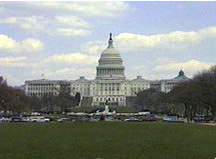Thu, Nov 18, 2010
Urges Better Harmonization, Cooperation And Intelligence-Based
Solutions
 The Airforwarders Association on Wednesday called on Congress
to work with TSA and CBP to implement a risk-based assessment
program for securing inbound air cargo. International cooperation
will be required to improve security -- this necessitates a
harmonized security program and one that is holistic in including
passenger and all-cargo aircraft. Domestically, efforts already
underway with TSA and CBP to share data and best practices must
continue to achieve meaningful increases in security.
The Airforwarders Association on Wednesday called on Congress
to work with TSA and CBP to implement a risk-based assessment
program for securing inbound air cargo. International cooperation
will be required to improve security -- this necessitates a
harmonized security program and one that is holistic in including
passenger and all-cargo aircraft. Domestically, efforts already
underway with TSA and CBP to share data and best practices must
continue to achieve meaningful increases in security.
“Airforwarders and others in the air cargo industry are
100% committed to safety and security, but that is the only
instance when a percentage is appropriate in any discussion of
cargo security,” said Brandon Fried, executive director of
the Airforwarders Association. “We urge Congress to reject
additional calls for 100% screening of inbound cargo. Instead,
policymakers should enact a risk-based system for global air cargo
security, as recommended by the supply chain and our international
partners.”
To further improve air cargo security, the Airforwarders
Association has developed a set of recommendations for
consideration by Congress, including:
- Improving inter-agency cooperation: TSA and CBP are finally
collaborating on practices and policies to better streamline the
international cargo security system. This must be expanded in both
scope and substance, and should also include the Department of
State and Department of Commerce.
- Including intelligence and supply chain solutions: Airport
screening should not be considered a first line of defense but
instead an effective complement to solutions like CCSP and freight
targeting from cargo manifests, already in place for domestic
cargo. These should be expanded to the all-cargo universe.
- Investing in additional methods and technologies for screening:
Funds for developing technologies for screening, and reviewing
existing technology and procedures should be allocated immediately.
The EU and other foreign carriers are using pallet screening
technologies that the TSA has deemed inadequate -- streamlining
certification for these machines is an imperative first step in
harmonization.
- Encouraging inter-industry cooperation and information sharing:
For too long, those in the supply chain have been divided by their
differences. CCSP brought shippers, passenger carriers and
forwarders together and created solutions. The current effort must
include all members of the international air cargo supply
chain.

“We support the data sharing and dissemination
recommendations outlined by TSA and CBP in their testimony today,
and have already begun working with the agencies to best implement
them,” said Fried. “The air freight forwarding industry
has worked tirelessly to achieve new screening mandates and has
been instrumental in implementing effective security programs for
domestic cargo. Our cargo security has never been higher due to
these efforts. We will continue to work closely with industry
partners and the government to improve security.”
More News
Improper Installation Of The Fuel Line That Connected The Fuel Pump To The Four-Way Distributor Analysis: The airplane was on the final leg of a flight to reposition it to its home>[...]
Decision Altitude (DA) A specified altitude (mean sea level (MSL)) on an instrument approach procedure (ILS, GLS, vertically guided RNAV) at which the pilot must decide whether to >[...]
“With the arrival of the second B-21 Raider, our flight test campaign gains substantial momentum. We can now expedite critical evaluations of mission systems and weapons capa>[...]
Also: Potential Mars Biosignature, Boeing August Deliveries, JetBlue Retires Final E190, Av Safety Awareness Czech plane maker Bristell was awarded its first FAA Type Certification>[...]
Also: Commercial A/C Certification, GMR Adds More Bell 429s, Helo Denial, John “Lucky” Luckadoo Flies West CAF’s Col. Mark Novak has accumulated more than 1,000 f>[...]
 NTSB Final Report: Evektor-Aerotechnik A S Harmony LSA
NTSB Final Report: Evektor-Aerotechnik A S Harmony LSA ANN's Daily Aero-Term (09.15.25): Decision Altitude (DA)
ANN's Daily Aero-Term (09.15.25): Decision Altitude (DA) Aero-News: Quote of the Day (09.15.25)
Aero-News: Quote of the Day (09.15.25) Airborne 09.12.25: Bristell Cert, Jetson ONE Delivery, GAMA Sales Report
Airborne 09.12.25: Bristell Cert, Jetson ONE Delivery, GAMA Sales Report Airborne 09.10.25: 1000 Hr B29 Pilot, Airplane Pile-Up, Haitian Restrictions
Airborne 09.10.25: 1000 Hr B29 Pilot, Airplane Pile-Up, Haitian Restrictions




